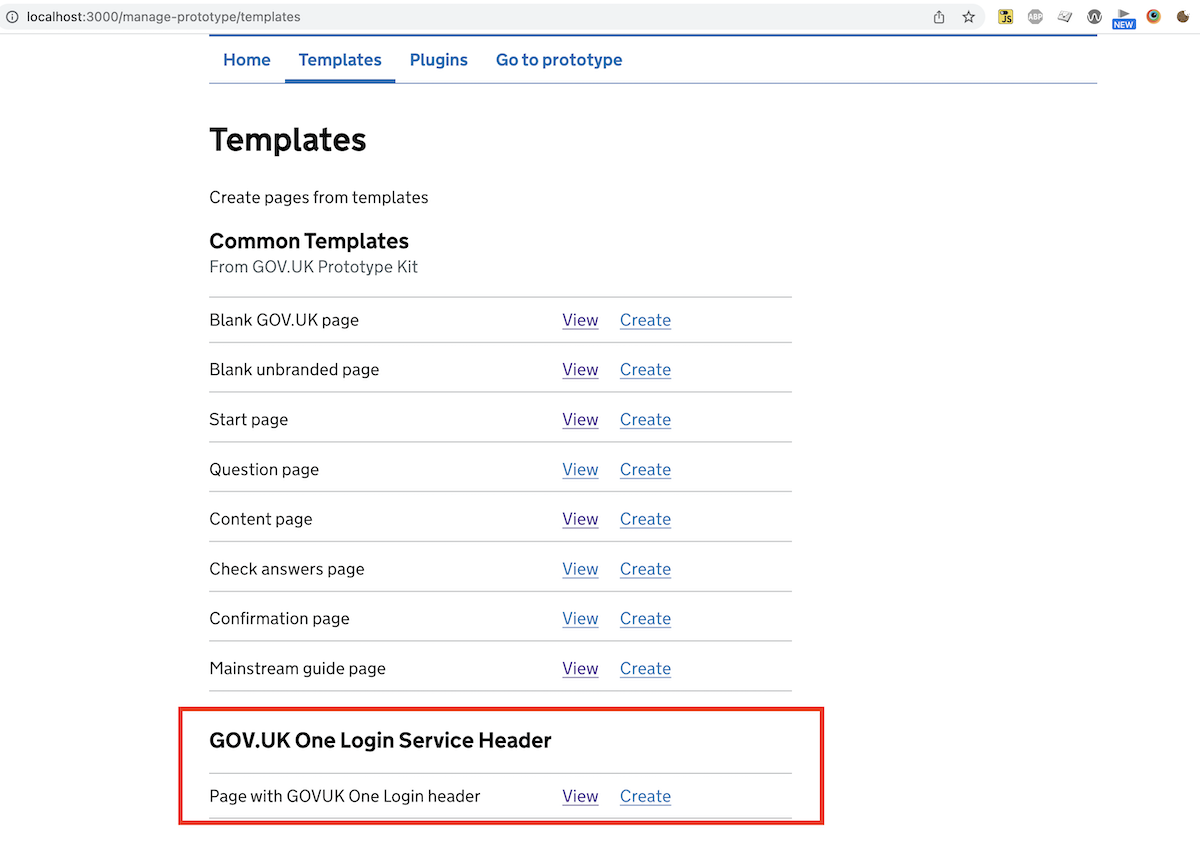service-header
How to install the header if you are using the Prototype Kit
Install the header plugin
Before you start the kit, run npm install github:govuk-one-login/service-header in your terminal.
(Note: if you are using a Mac and seeing an error along the lines of xcrun: error: invalid active developer path (/Library/Developer/CommandLineTools), missing xcrun at: /Library/Developer/CommandLineTools/usr/bin/xcrun., try running xcode-select --install before you run the npm install command above)
Now the header should appear in the list of installed plugins under the /manage-prototype/plugins page in your prototype.

Note that once the header has been added to the list of available plugins published by the Prototype Kit team, you will be able to install the header by simply clicking the Install button on the /manage-prototype/plugins page.
Create a page from the pre-existing template
To create a page in your prototype using a pre-built template containing the header, navigate to /manage-prototype/templates and create a new page from the “Page with GOVUK One Login header” template.

To set the service name that is displayed in the header, use the following syntax: {% set serviceName = "My example service name" %}.
As of v3.0.0 of the GOV.UK One Login Service Header, it includes the Design System service navigation component. If you are using the latest version of the GOV.UK One Login Service Header, please make sure the GOV.UK Frontend plugin has also been updated to the latest version. You might experience errors otherwise.
The options in the Nunjucks macro options table on the Design System service navigation component page can be defined as Nunjucks template variables.
For example, {% set menuButtonText = "Custom Menu Button" %} will change the text of the service navigation mobile navigation menu toggle.
To set the list of navigation links , use the following syntax:
{% set navigation = [
{
href: "#nav1",
text: "Navigation item 1"
},
{
href: "#nav2",
text: "Navigation item 2",
active: true
},
{
href: "#nav3",
text: "Navigation item 3"
}
]
%}
The fields indicate as follows:
hrefindicates the link destination,textis the text being displayed,activethis is an optional parameter which indicates that the user is within this group of pages in the navigation hierarchy. It adds an underline to the link.
To overwrite the destination for the GOV.UK link in the header, use {% set homepageLink = "https://example.service.gov.uk/" %}. The link goes to “https://www.gov.uk/” by default.
To overwrite the destination for the One Login link in the header, use {% set oneLoginLink = "https://example.service.gov.uk/" %}. The link goes to “https://home.account.gov.uk/” by default.
To overwrite the destination for the sign out link in the header, use {% set signOutLink = "https://example.service.gov.uk/sign-out" %}. The link goes to “https://home.account.gov.uk/sign-out” by default.
Add the set statements listed above after the extends line at the top of the file.
Use the header component in an existing page or template
If instead of using the template installation described above, you want to include the header component into one of your existing layouts or templates, the component can be imported using the syntax:
{% from "di-govuk-one-login-service-header/service-header.njk" import govukOneLoginServiceHeader %}
The component can then be used like so:
{% block header %}
{{ govukOneLoginServiceHeader({
signOutLink: "/test-signout",
oneLoginLink: "/test-one-login",
serviceNavigationParams: {
navigation: [
{
href: "#navigation1",
text: "Navigation item 1"
},{
href: "#navigation2",
text: "Navigation item 2",
active: true
},{
href: "#navigation3",
text: "Navigation item 3"
}],
serviceName: "Test service name",
navigationLabel: "Test label"
}
}) }}
{% endblock %}
How to update the header if you are using the Prototype Kit
You may not receive updates or bug fixes automatically.
To update the header to the most recent version, please run npm update govuk-one-login-service-header in your terminal.